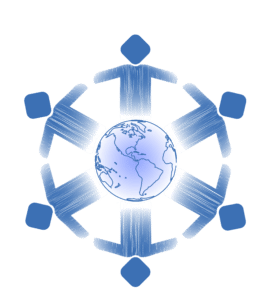Substance use and addiction counseling among international healthcare workers.
Substance use is a major global problem and a major contributor to the global disease burden. It is among the leading risk factors for chronic disease, specifically the consumption of tobacco and alcohol “ranked 2nd and 5th most important risk factors” (Tsuei et al., 2017, p. 2), and claims millions of lives each year directly and indirectly. According to the United Nations (UNODC) World Drug Report 2020, over 35 million people were reported to be suffering from substance use disorders (SUDs). These numbers have increased since COVID-19, and are projected to increase further after the pandemic with the looming economic crisis. The World Drug Reports have documented unwavering increases in substance use from 2018-2022, suggesting it is a serious cause for concern: 269 million people used drugs in 2018; 275 million used in 2019; and 284 million people in the 15-64 age range in 2020.
Substance use threatens social security and social welfare, causes major negative environmental impacts, and is a severe threat to positive global health outcomes. It places significant strain on healthcare systems and resources (among other resources) everywhere. The situation is especially alarming when consideration is given to how it affects communities and regions that lack the capacity, treatment support, or resources to address the issue, or the growing number of healthcare workers (HCWs) in these regions who indulge in substance use. Tsuei et al. (2017) assert that this issue “…disproportionately affect[s] low- and middle-income countries (LMICs), considering their rising disease burden and low service capacity” (p. 1). Therefore, an increase in substance use in these regions is likely to create an unmanageable burden. For regions such as sub-Saharan Africa that face a severe healthcare worker shortage (Jaguga 2022), this is likely to drain healthcare resources and worsen access to healthcare services in individual countries; and worse, an increase in substance use in healthcare workers could be crippling to the region’s healthcare systems.

Substance use in healthcare professionals is not a new topic. The Hazelden Betty Ford Foundation (2015) postulates that the topic dates as far back as the nineteenth century in scientific literature. This research, however, has largely concentrated on some high-income countries (HICs), and very little was previously documented on the topic in low- and middle-income countries (Mokaya et al., 2016). Therefore, these studies conducted in Kenya (Mokaya et al., 2016; Kolongei et al., 2020; Jaguga et al., 2022) and Nigeria (Habibulla et al., 2018; Omole et al., 2020), all of which shed light on this growing issue in the sub-Saharan African region, serve an important purpose of bridging the gap in the literature and documenting the trends of drug use in healthcare workers in this region, which could also be indicative of what occurs in other regions and LMICs (Mokaya et. al 2016).
The research sketches a persistent pattern that highlights tobacco and alcohol as the most commonly used substances in the region, and that these are more commonly used among male healthcare workers. More significantly, the research demonstrates that the rate of substance use among healthcare workers in Kenya and Nigeria is higher than (or similar) to that of the general population. This is consistent with research conducted in other regions that highlight the rate of addiction in healthcare professionals as comparable to or higher than the rest of the population (Berge et al., 2009), and this validates concerns about the magnitude of the problem. Substance use in healthcare workers poses a serious threat to the access and delivery of healthcare services. Given that healthcare professionals are considered gatekeepers of positive lifestyle habits, and, therefore, gatekeepers of positive global health outcomes, substance use in healthcare workers further escalates the public health problem in the region. Mokaya et al. (2016) highlight that the “Use of alcohol, tobacco, and these other substances [among HCWs], even at low to moderate risk levels, may exert a higher total burden on the public health system than harmful (p. 316).
Some of the most common factors for substance use in healthcare professionals include working in a highly stressful environment (extended work hours, late work hours, heavy workload, limited human resources, and burnout), frequent and ongoing exposure to disease and trauma, and the resulting mental health issues (depression and anxiety), inability to balance work and personal life, or even the lack of personal life due to long hours spent on the job. Additionally, the ease with which healthcare professionals can access certain types of substances (medications and other controlled substances) is often cited as another major risk factor, suggesting that there is a need for more strategic measures toward drug distribution and dispensing. It must be noted too that many of these factors have been amplified by the COVID-19 pandemic, which has caused severe mental health difficulties for many healthcare professionals (Moya-Salazar et al., 2022), and this has likely contributed to the increase in substance use among this group.

Substance use in healthcare providers has serious implications for patients, practitioners, healthcare systems, and global health. It has been known to result in a decrease in productivity and an increase in absenteeism among healthcare professionals. This, coupled with a shortage of workers, puts pressure on healthcare systems and resources. Moreover, substance use can impair a practitioner’s judgment in the delivery of health services, put patients and others at risk, and can result in accidents in the field, or practitioner impairment; “a compromise in the ability of a health worker to effectively, competently and safely practice according to acceptable professional standards due to substance use, abuse or dependency” (Omole et al., 2020).
Another major impact of substance use on healthcare workers is the effect it is likely to have on the delivery of preventive counseling and care efforts. Mokaya et al. (2016) assert that “HCWs personal substance use affects their provision of substance-use-related care” (p.317). Limited or lower counseling efforts do not augur well for health globally, and greatly hinder the ability to influence patients to adopt healthy lifestyles. Since patients are more likely to take advice from healthcare professionals regarding lifestyle practices and there is a correlation between their lifestyle choice and their patient’s health practices, this could prove counterproductive in the fight against SUDs and chronic disease, and effecting much-needed global health changes.
It is believed that because of the vital role healthcare professionals play in enhancing health, they are aware of the implications of their use of substances, or they fully understand the effects on their communities. But many healthcare workers lack the capacity in addiction medicine and preventive medicine and, as such, may not be aware of the implications. Furthermore, the research shows that a lack of knowledge in addiction and addiction medicine can result in stigma-related attitudes, even among healthcare professionals. Mokaya et al. (2016) assert that “it cannot be assumed that HCWs understand the consequences of their own consumption, as there is limited substance use training available…” (p.317). This indicates that greater training efforts are needed to build capacity, edify and equip healthcare workers with the knowledge and skills necessary to help themselves, as well as help others understand the risks and impact of substance use. This has been a primary aim of the ATHP, to address the lack of training in addiction and addiction medicine by maximizing the number of healthcare professionals that receive this specialized training so that they can prevent and treat SUDs.

Without healthcare professionals as champions of healthy practices, behaviors, and lifestyles, the opportunities to create positive lasting global health outcomes decreases. Substance use in healthcare workers impedes the usefulness of preventive counseling efforts, reduces credibility in healthcare workers, and can create a crippling effect on healthcare systems and global health. Given the vital role healthcare providers play in building health resilience in communities, interventions and policies are needed to tackle this problem. While there is a need to develop policies and implement interventions that focus on the treatment and rehabilitation of healthcare workers, there is also a need for greater monitoring and prevention efforts to address the issue. Continued research is needed to highlight the issue, especially in LMICs, and continued efforts towards improving the capacity of healthcare professionals needed to prevent, detect and respond to the issue are crucial.
In our next blog, we explore some discoveries and key takeaways from the research on Health Policy, Environment, and Addiction. Stay tuned!
References
American Addiction Centers.(2019, July 23). Drug use and Addiction Increasing in Developing Countries. Addiction Blog. https://recoveryfirst.org/blog/drug-use-and-addiction-increasing-in-developing-countries/
Baldisseri, M. R. (2007). Impaired healthcare professional. Critical care medicine, 35(2), S106-S116.
Berge, K. H., Seppala, M. D., & Schipper, A. M. (2009, July). Chemical dependency and the physician. In Mayo Clinic Proceedings (Vol. 84, No. 7, pp. 625-631). Elsevier.
Givetash, L. (2022, March 17). WHO Says Africa Faces Rising Substance Abuse Post-COVID.
https://www.voanews.com/a/who-says-africa-faces-rising-substance-abuse-post-covid/6 473380.html
Habibullah, A., Muhammad, M. A., Kabiru, M., Kabiru, M. D., & Abdulfatai, T. B. (2018). Predictors of stimulants use among physicians in a Nigerian tertiary health institution in Sokoto, Northwest Nigeria. Journal of euroscience and Behavioral Health, 10(2), 9-17.
Hazelden Betty Ford Foundation. (2015, June 1). Unique Challenges for Professionals in Addiction Diagnosis and Treatment. Butler Center for Research.
https://www.hazeldenbettyford.org/education/bcr/addiction-research/health-care-professi
Henson, P. (2022, July 14). Statistics for Substance Abuse in Medical Professionals. American Addiction Centers. https://americanaddictioncenters.org/rehab-guide/addiction-statistics/medical-profession als
Jaguga, F., Kwobah, E. K., Mwangi, A., Patel, K., Mwogi, T., Kiptoo, R., & Atwoli, L. (2022). Harmful alcohol use among healthcare workers at the beginning of the COVID-19 pandemic in Kenya. Frontiers in psychiatry, 157.
Kolongei, T. K., Osero, J., & Gachau, A. (2020). Patterns And Correlates Of Substance Use: Cross Sectional Exploratory Study Among Health Care Workers In Bungoma County, Kenya.
Lev-Ran, S., Adler, L., Nitzan, U., & Fennig, S. (2013). Attitudes towards nicotine, alcohol and drug dependence among physicians in Israel. Journal of Substance Abuse Treatment, 44(1), 84-89.
Merlo, L. J., Teitelbaum, S. A., & Thompson, K. (2018). Substance use disorders in physicians: Epidemiology, clinical
Mokaya, A. G., Mutiso, V., Musau, A., Tele, A., Kombe, Y., Ng’ang’a, Z., Frank, E., Ndetei, D., Clair, V. (2016). Substance use among a sample of healthcare workers in Kenya: a cross-sectional study. Journal of Psychoactive Drugs, 48(4), 310-319. https://doi.org/10.1080/02791072.2016.1211352
Moya-Salazar, J., Nuñez, E., Jaime-Quispe, A., Zuñiga, N., Loaiza-Barboza, I. L., Balabarca, E. Chicoma-Flores, K., Cañari,B., & Contreras-Pulache, H. (2022). Substance Use in Healthcare Professionals During the COVID-19 Pandemic in Latin America: A Systematic Review and a Call for Reports. Substance Abuse: Research and Treatment, 16, 11782218221085592. https://doi.org/10.1177/11782218221085592
Omole, V.N., Irohibe, C.K., Usman, N.O., Audu, O., Jamda, M.A., Baduku, A.S., & Maigari, J.M., (2020). Substance Use Among Healthcare Workers In A Nigerian Tertiary Hospital. Kanem Journal of Medical Sciences, 14(2): 1-11.
Ritchie, H., & Roser, M. (2019, December). Drug Use.
https://ourworldindata.org/drug-use#deaths-from-substance-use-disorders
Smith, A. M., & Campbell, D. G. (2020). Strategies to Address Substance-Abusing and Substance-Impaired Healthcare Professionals. International Journal of Applied Management and Technology, 19(1), 8.
Tsuei, S. H. T., Clair, V., Mutiso, V., Musau, A., Tele, A., Frank, E., & Ndetei, D. (2017). Factors influencing lay and professional health workers’ self-efficacy in identification and intervention for alcohol, tobacco, and other substance use disorders in Kenya. International journal of mental health and addiction, 15(4), 766-781.
United Nations. (2019, June 26). World Drug Report 2019: 35 million people worldwide suffer from drug use disorders while only 1 in 7 people receive treatment [Press release].
United Nations. (2020, June 25). UNODC World Drug Report 2020: Global drug use rising; while COVID-19 has far reaching impact on global drug markets [Press release].
United Nations. (2022, June 27). UNODC World Drug Report 2022 highlights trends on cannabis post-legalization, environmental impacts of illicit drugs, and drug use among women and youth [Press release].
World Health Organization. Improving prevention and Treatment for Drug Use Disorders.
https://www.who.int/activities/improving-prevention-and-treatment-for-drug-use-disorders
World Health Organization. (2021, April 13). Noncommunicable diseases.
World Health Organization. (2021, August 4). Opioid Overuse.
World Health Organization. (2020, December). WHO methods and data sources for global burden of disease estimates 2000-2019
Aduke Williams
Author

